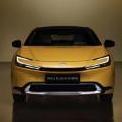Scelte strategiche gruppo Stellantis NV
-
Contenuti simili
-
PSA/Stellantis - Diesel 1.5 BlueHDi
Pubblicato da whitebyzantine53,
- newco
- stellantis
- (e 2 altri in più)
- 8 risposte
- 618 visite
-
- 9 risposte
- 1005 visite
-
- 0 risposte
- 814 visite
-
-
-







.thumb.jpg.46228d717c405acd43b45b79fddce6a4.jpg)
.thumb.jpg.902d2a4f20a129e92b6f6920407b81bd.jpg)













Messaggi Raccomandati:
Crea un account o accedi per lasciare un commento
Devi essere iscritto per commentare e visualizzare le sezioni protette!
Crea un account
Iscriviti nella nostra community. È facile!
Registra un nuovo accountAccedi
Sei già registrato? Accedi qui.
Accedi Ora